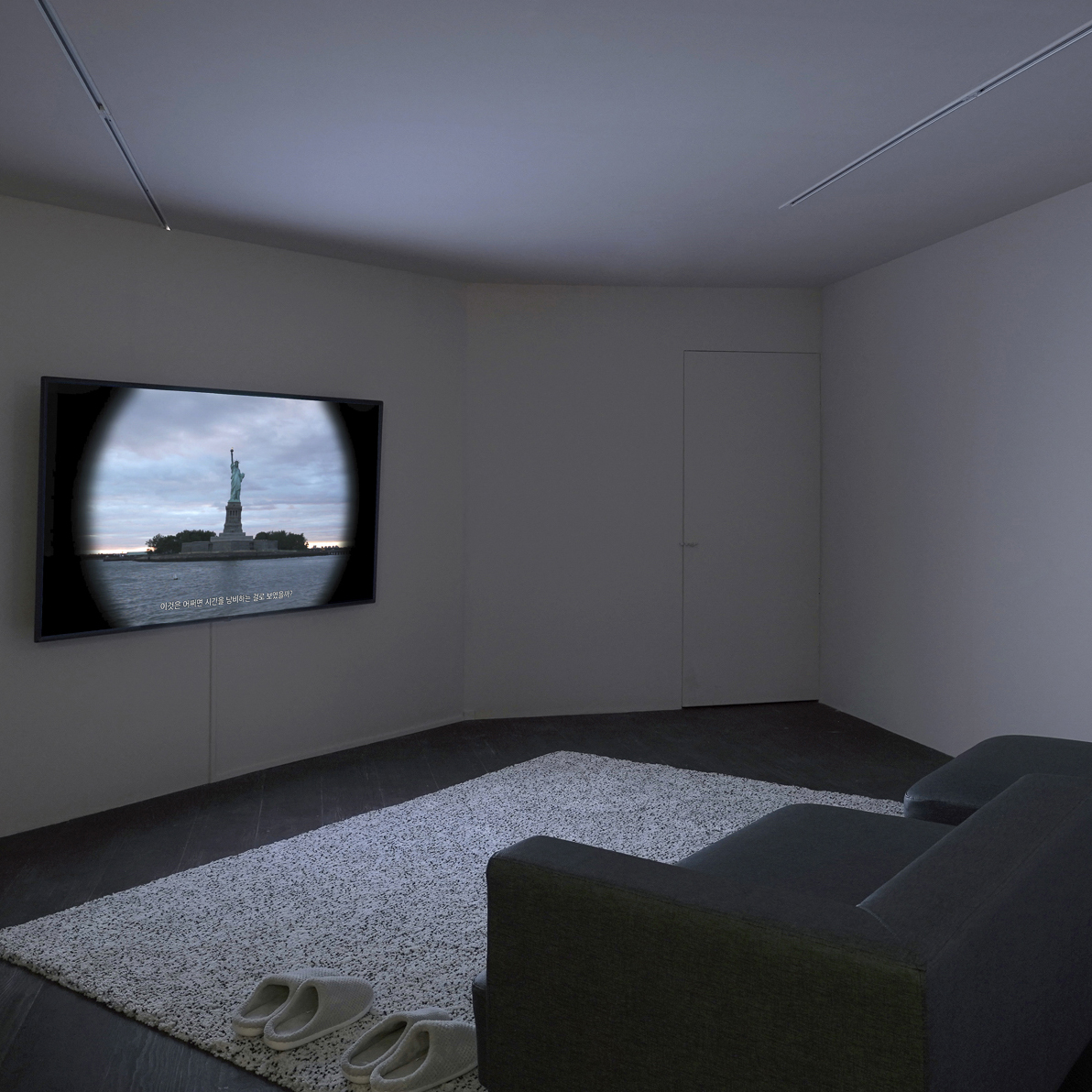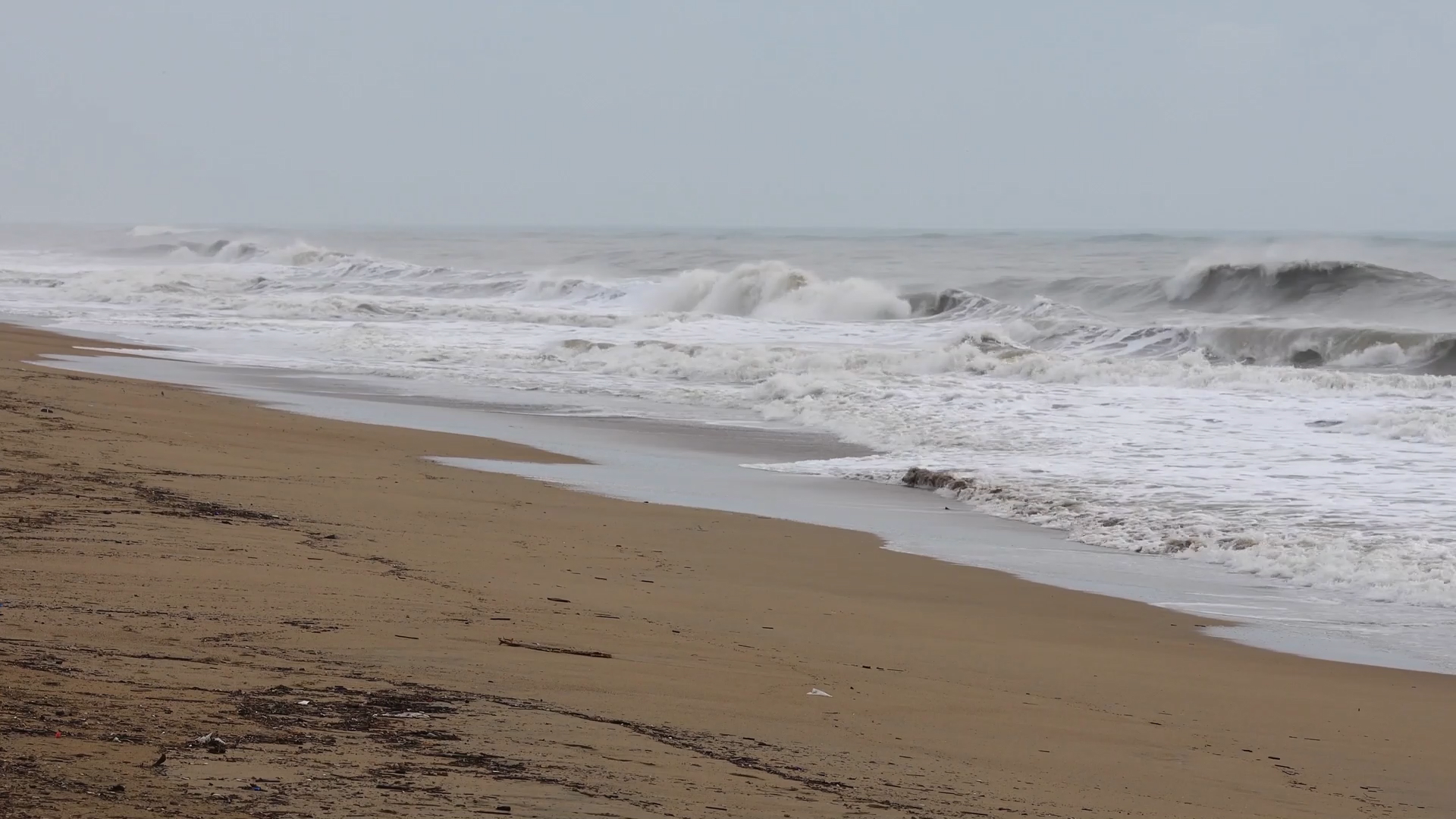Ham Hyekyung collects images from various places, narrates them into stories that can be found in anyone’s everyday life, and visualizes them with foreign language narration, Korean subtitles, and lyrical music and videos. With this she starts from things that everyone knows and wants to tell something deep and intimate. She creates stories about things like past times, uncertainty, shame, pride, loneliness, weariness, and stubbornness in which fiction and reality are intertwined.

9_함혜경
1. Please introduce yourself and your work.
I am Ham Hyekyung and showed a new work A Small Island I Call Peace (2020) in Nam June Paik Art Center. Most of my previous works are single channel videos, and I like the format. I usually write down fragmented sentences and put them together like a puzzle to create a story. I make use of images collected from various places. Rather than creating a narrative structure, I randomly select and reconstruct the listed records. I work with a theme, a kind of mood, and a character, but I do not think of weaving a plot. Most of my work can be seen as being derived from minor but mind-moving events and inspiring people.
2. How did you find it to participate in the project Random Access as the last artist in 2020?
This year, due to covid-19, the schedules of many exhibitions were changed or some of them were even canceled. It is unavoidable, but as an artist, it is a real pity that you cannot properly show the work. While working for this exhibition, I was very concerned about whether the exhibition could be open as planned, whether the museum would be closed every time the level social distance policies was raised. I think I was lucky enough to be able to show my work in the exhibition as scheduled and smoothly.
3. You have continued to work with video. Nam June Paik is often referred to as the father of video art. It may be said that most artists working on video are under his influence wittingly or unwittingly. Which part of you do you think is personally or artistically connected to Paik?
Paik anticipated already in the 1970s that today’s stories would be recorded in video. For me, the medium of video is significant in a sense that it makes me revisit the concept of time through the capacity of recording. I am also fascinated by the fact that the combination of time and space that cannot be realized in other mediums is possible only in video. To create a new story by recalling the bygone, or combining images of places I have never been to, is important part of my work. Above all, I am able to think about my own identity through the medium of video, which is Paik’s influence to my mind.
4. Tell us more about A Small Island I Call Peace showcased in Random Access.
I do not have the talent to analyze my own work. Hmm, you may find some of its scenes familiar as if you have seen them before, and some of its texts too subjective to relate to. I wish to take a protagonist of my story, who lives a bored and meaningless life, out of this world. I wanted to create my own world by erasing the meanings given to desire, love, time, and place in reality. This work has a main story, and I thought about the structure of going back to the past or forward to the future in the middle. The character Betty in the story is the name of the female protagonist in my first work, The Lonely Hunter in the Heart (2003). The still images from the second half of the video were also scanned photos taken with my automatic camera while walking around the city of Paris about a week before returning to Korea in 2006. My actual past was used more than any other works, but I thought at that time that if I used them up all, I would be able to move forward.
5. Could you tell us about your future plans after Random Access?
I would like to do more experimental work in my terms. I am also concerned whether my use of video as a medium is too passive or only adopts a familiar way. I would not start working with a clear idea every time, but I always want to go for something different. After the release of A Small Island I Call Peace, I heard from an acquaintance, “How about doing something that people would not like?” The intended meaning of this comment is different, but I thought it resembled what I was trying to do in a similar context. I want to contemplate more on the movement, perspective, and rhythm of the video, and also to deal with both private and public narratives more widely.
6. Selected as a Random Access artist, you produced new works through consistent discussion with curators of Nam June Paik Art Center. Do you have any comments or episodes you would like to share about Random Access?
Until you open an exhibition, more work is required than it seems, and many thing do not always go as planned. During this exhibition, I talked a lot with curators. We shared the joys and sorrows of each other and I received a lot of help until the exhibition was over. I’m not interested in characters that are obsessed with some sort of ambition, but sometimes I feel like my characters are falling behind the confident characters in the works of others. Nevertheless, my work is not to attract attention, but to try to see the world in which I have to live a little better. Although it is the already bygone exhibition, I hope that it could be a moment of comfort in the unforgettable year of 2020 to the curators and visitors.





